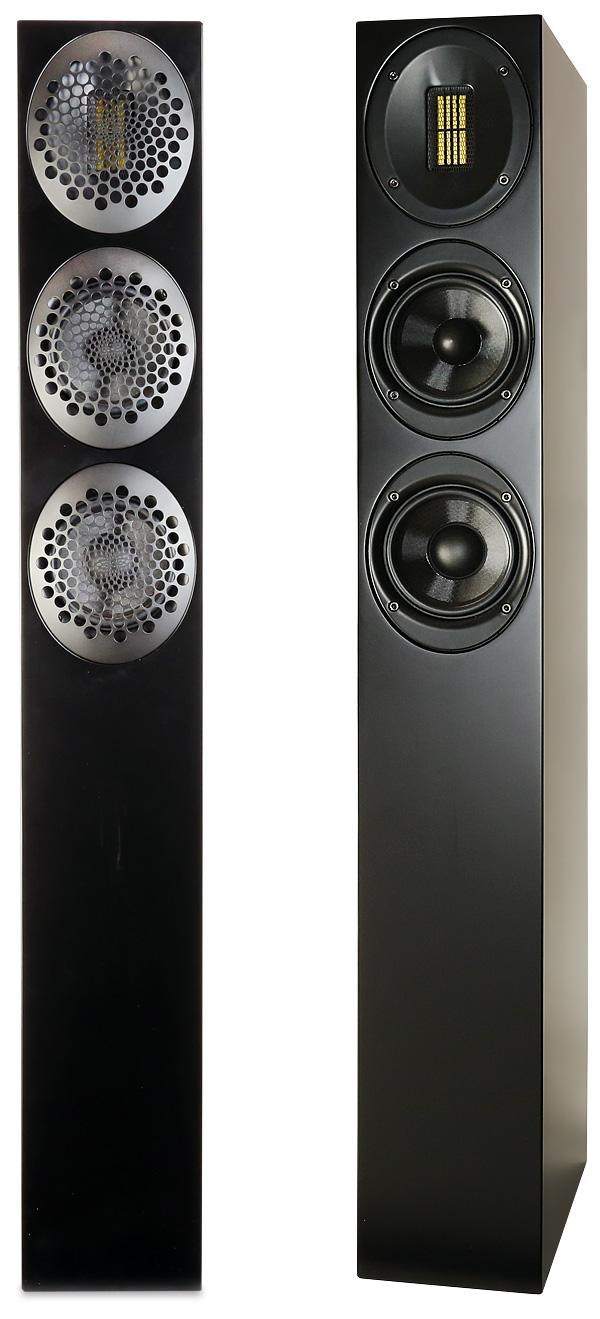Scansonic M20 Loudspeaker

 The middle model in Scansonic's trio of M-series loudspeakers is one of the growing breed of 'compact floorstanders'
The middle model in Scansonic's trio of M-series loudspeakers is one of the growing breed of 'compact floorstanders'
Take a look at these Scansonic floorstanders, and you'll notice they look big and impressive, especially for speakers selling for a sensible £1499 in very on-trend black or white silk finishes. But don't let our photographs of the M20 fool you for those mid/bass drivers are just 10cm in diameter – or four inches in old money – and the baffle a few cm wider still. Recalibrate your view based on those figures, and you'll realise these speakers are well short of a metre tall – 93.5cm, in fact – and that, if not quite knee-high to a grasshopper, means these aren't what you'd call 'room-dominating'.
Give Me A Ribbon
True, compact floorstanding speakers aren't exactly new but even by the standards of their class the M20 speakers are small. Indeed, they occupy less carpet space than the company's smaller standmount models in this series, the diddy M5, and the more conventionally-proportioned M10, when these are mounted on their dedicated stands. Which, by the way, are very pretty but do cost some £499 a set.
If you want something with more conventional floorstanding stature, you need look to the M40 model, which sells for £500 more than the M20, but stands a more respectable 108.5cm tall, even though it manages that by doubling up on the mid/bass drivers. Mind you, they're still the same 10cm units, so the flagship speaker is no less slender.
The M series lineup draws on the technology of stablemate Raidho, part of the Danish-based Dantak group, and uses a version of the planar/ribbon AMT tweeter found across the range. Its ultra-light kapton/aluminium sandwich membrane measures just 20μm thick and weighs in at only 0.03g, the driver mounted in an oval faceplate to match the 10cm mid/bass and bass drivers that crossover at a fairly high 4kHz.

These latter two drivers use a fibreglass cone with honeycomb reinforcement and, for the mid/bass, a central phase plug. This upper driver reaches across a wide 4kHz down to 300Hz where it's joined by the second driver for the really low stuff. And as you'll have noticed, Scansonic hasn't gone down the conventional 'full-length fabric grille' route but, instead, has mounted the mid/bass drivers in oval cut-outs to match the tweeter. Each has its own push-on cover punched through with a pattern of perforations, and while they can be removed it's worth remembering that the uppermost plate also plays a role in controlling the dispersion of the tweeter.
In case you're harbouring any concerns that these svelte speakers might be no more than a much smaller design raised up with a cabinet rather than a stand – as has been the case with some two-way floorstanders we've encountered in recent times – then be assured that the M20s use all of their cabinet volume, with two slot-shaped bass reflex ports just below the mid-point of the rear panel. This speaker may be small, but an all-up weight of 12kg speaks to the fact it's solidly built. There's decent internal bracing, the cabinet walls feel suitably dead and, lest you're worried about the stability of that slim cabinet, it's supplied with outrigger feet to spread the footprint. You don't have to use them if you don't want to, but such plinths are commonplace with today's tall, thin speakers so that they pass health and safety regulations regarding the 'topple-ability' of the cabinets.
![]() Folk Music
Folk Music
I've been picked up in this month's letters pages over the positioning requirements of a more expensive Scansonic model, so suffice it to say that after some experimentation I found the M20s to sound best at least half a metre out from the wall behind them, and rather further from the side walls, with a generous toe-in to firm up the stereo image. These aren't hugely bass-heavy speakers, as PM's Lab Report makes clear, so there's less low-end to over-excite things if they're placed relatively close to a rear wall, for example.
If your stereotype of Scandinavian hi-fi listening revolves around low-slung IKEA sofas, or sitting on an artfully folksy rug on the floor and letting the music wash over you as you sip a cheeky Akvavit or an eye-wateringly expensive Mikkeller craft beer, the M20s are going to confirm that image. You see, these speakers sound best when the listener's ear-height is at or around the level of the tweeter, and for most sitting positions they're just too short to make that possible.
Bricking It
In fact, my initial listening suggested the treble here was very refined, though this view might just as easily be interpreted as 'slightly soft', for what they lacked in brashness they traded for a concomitant dilution of atmosphere and ambience, even with the tweeter grille off. This impression was reinforced when I slipped off the sofa and listened sitting on the floor, albeit without the artfully folksy handwoven rug, at which point the treble became somewhat more apparent, insightful and engaging.
























































